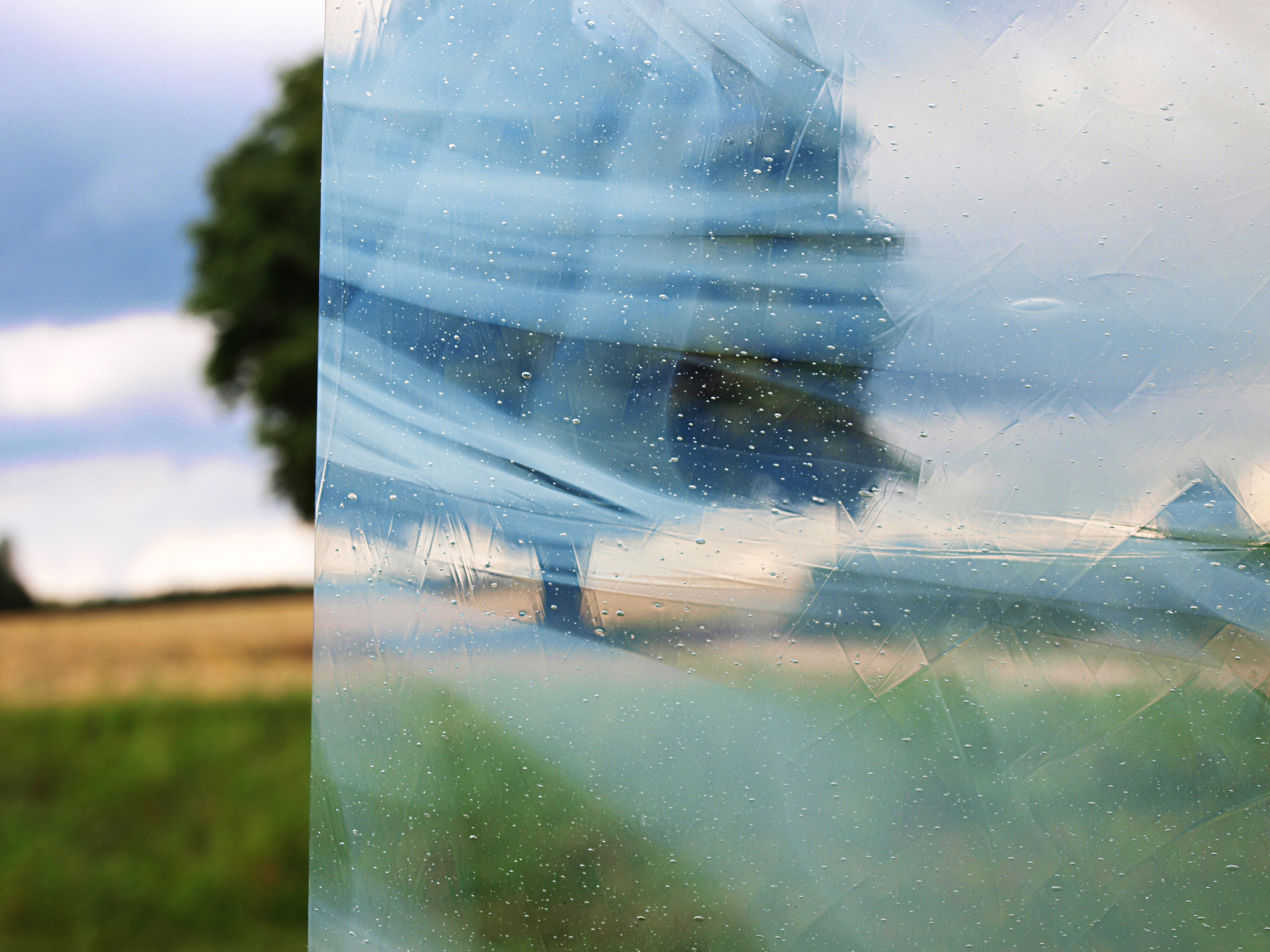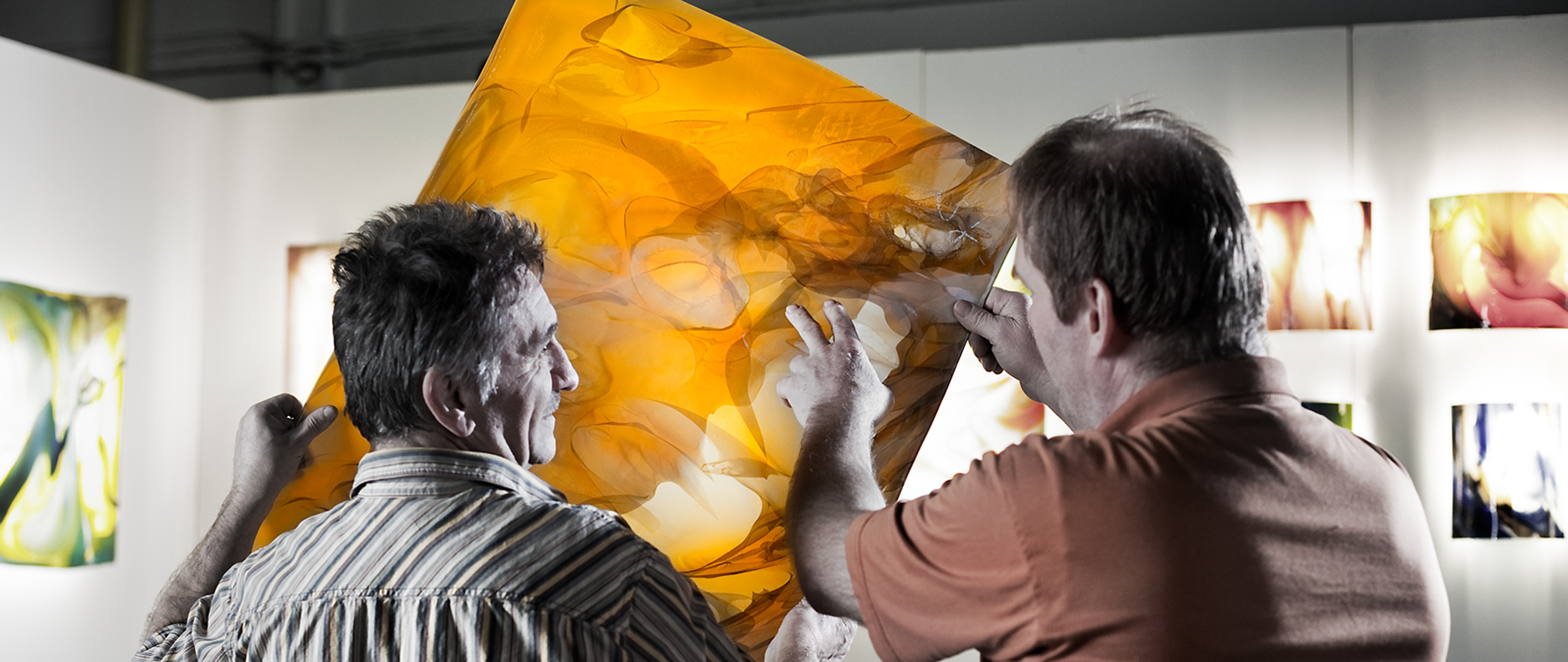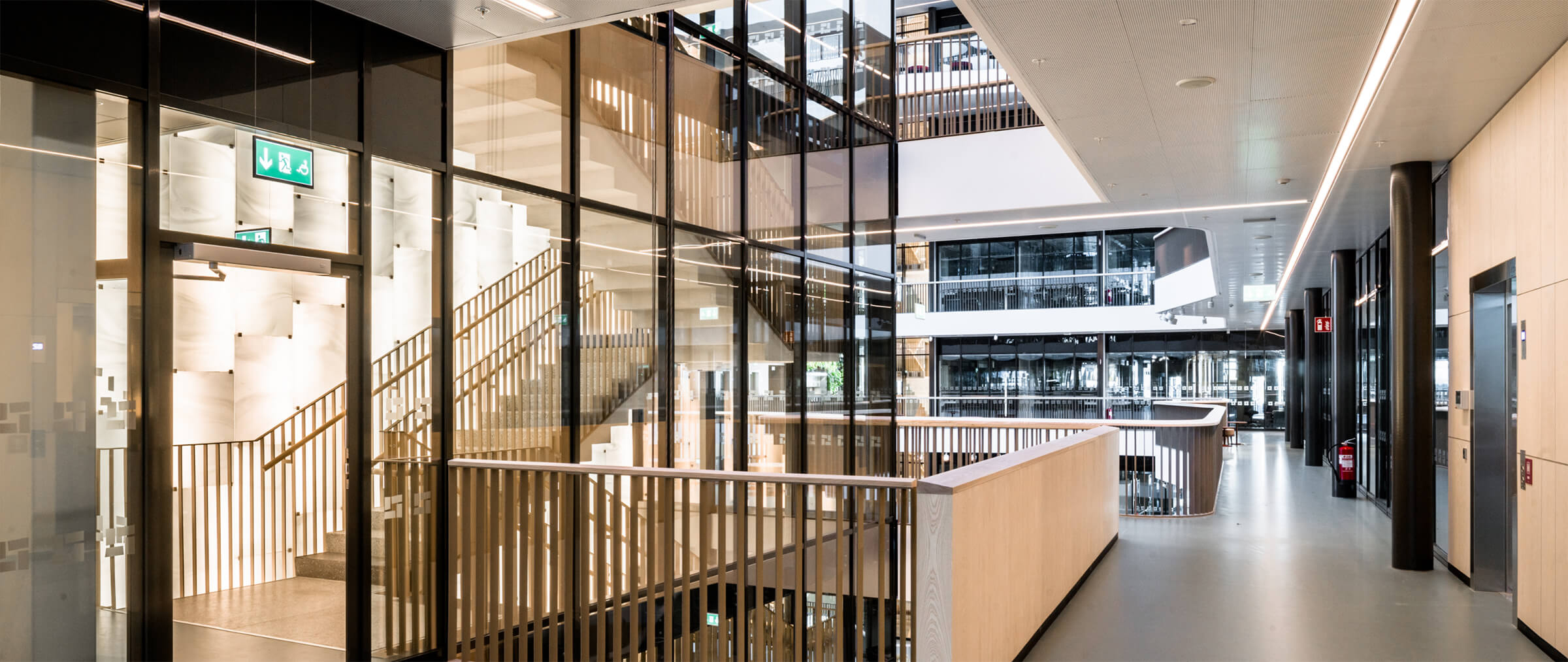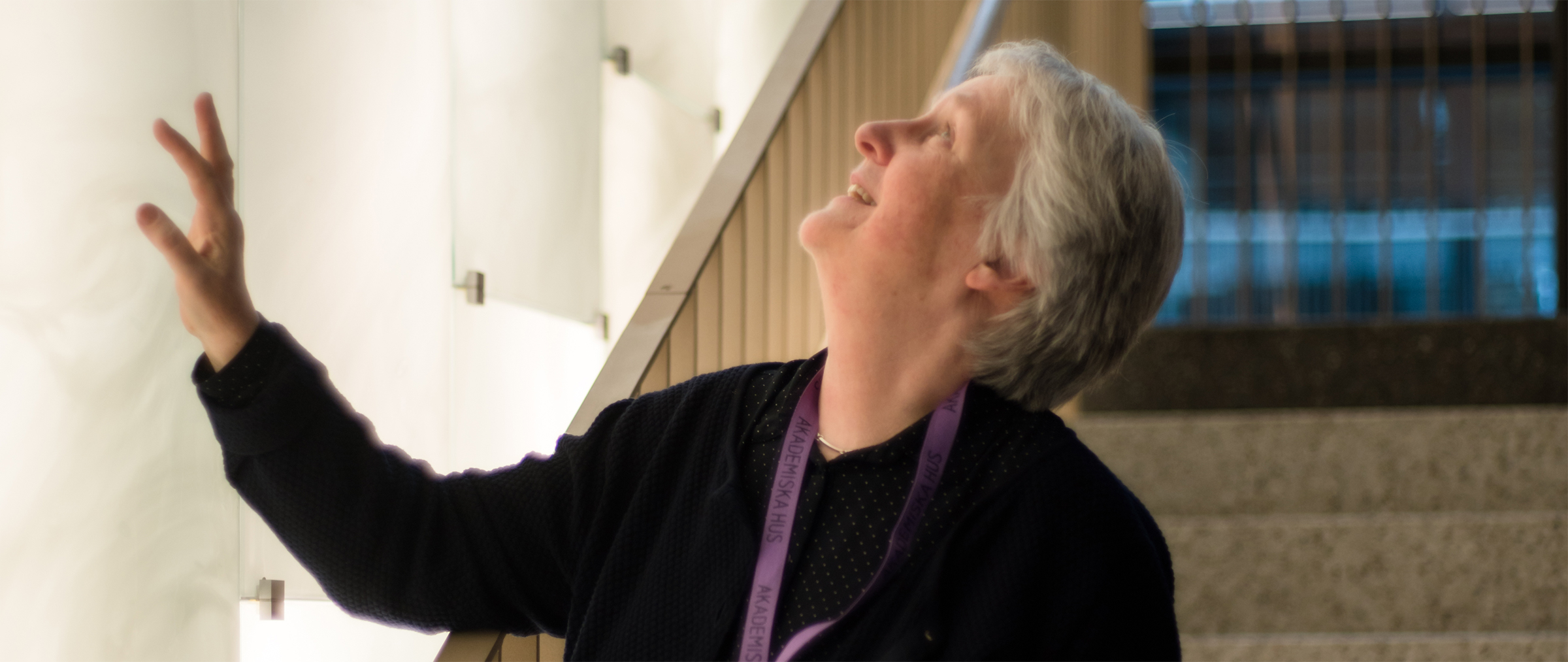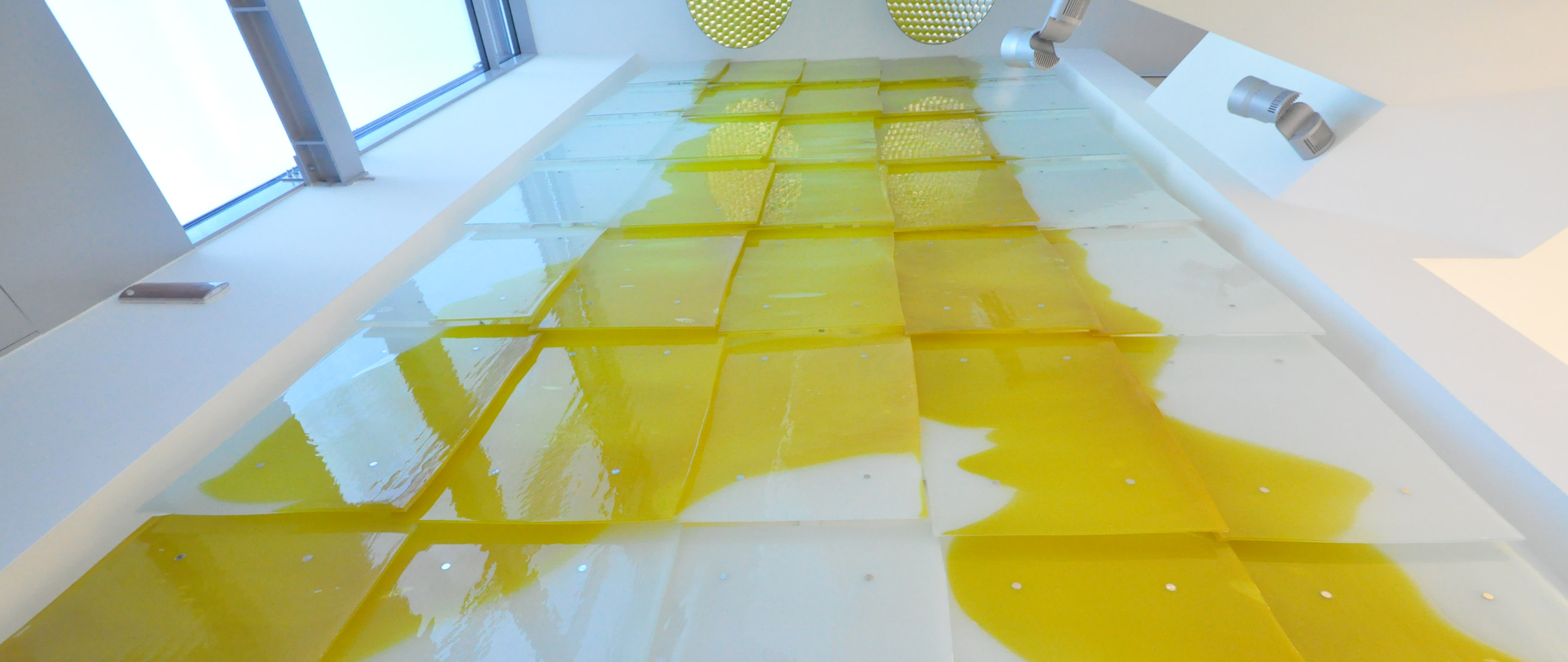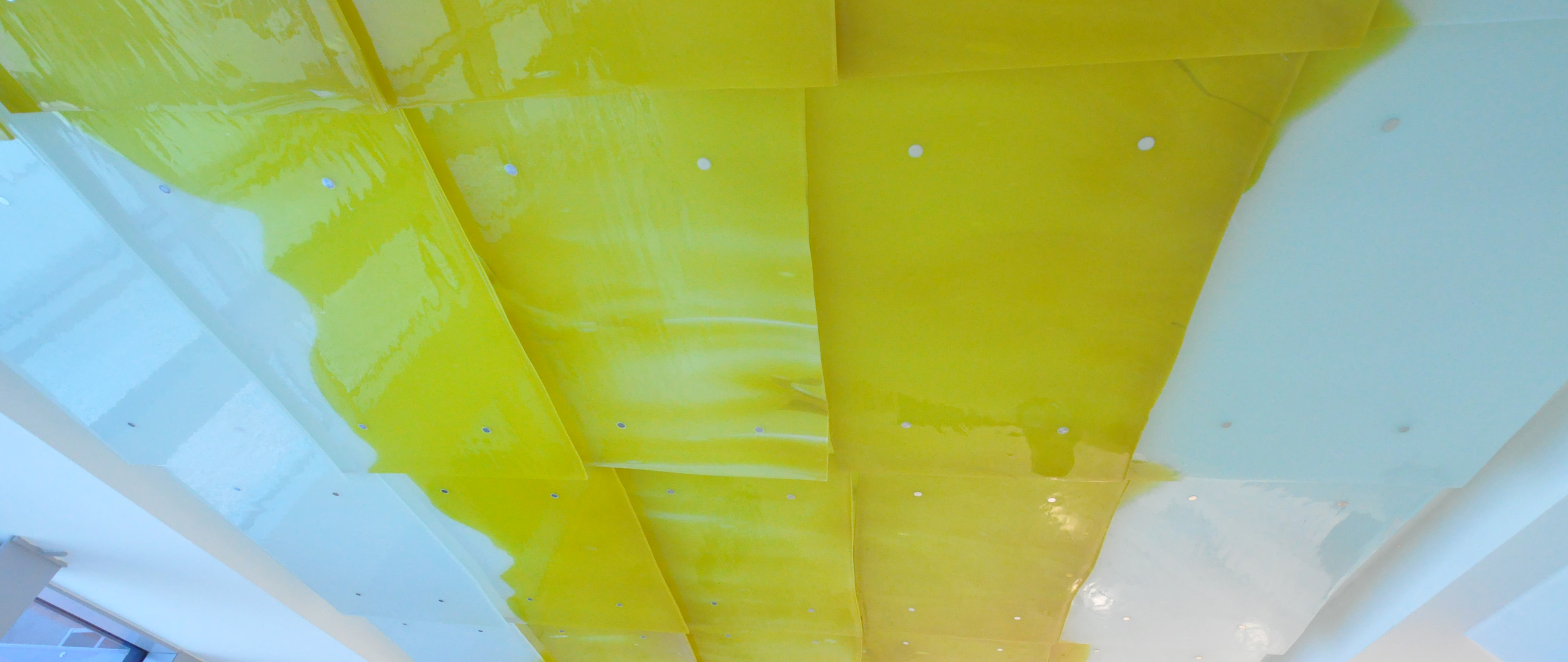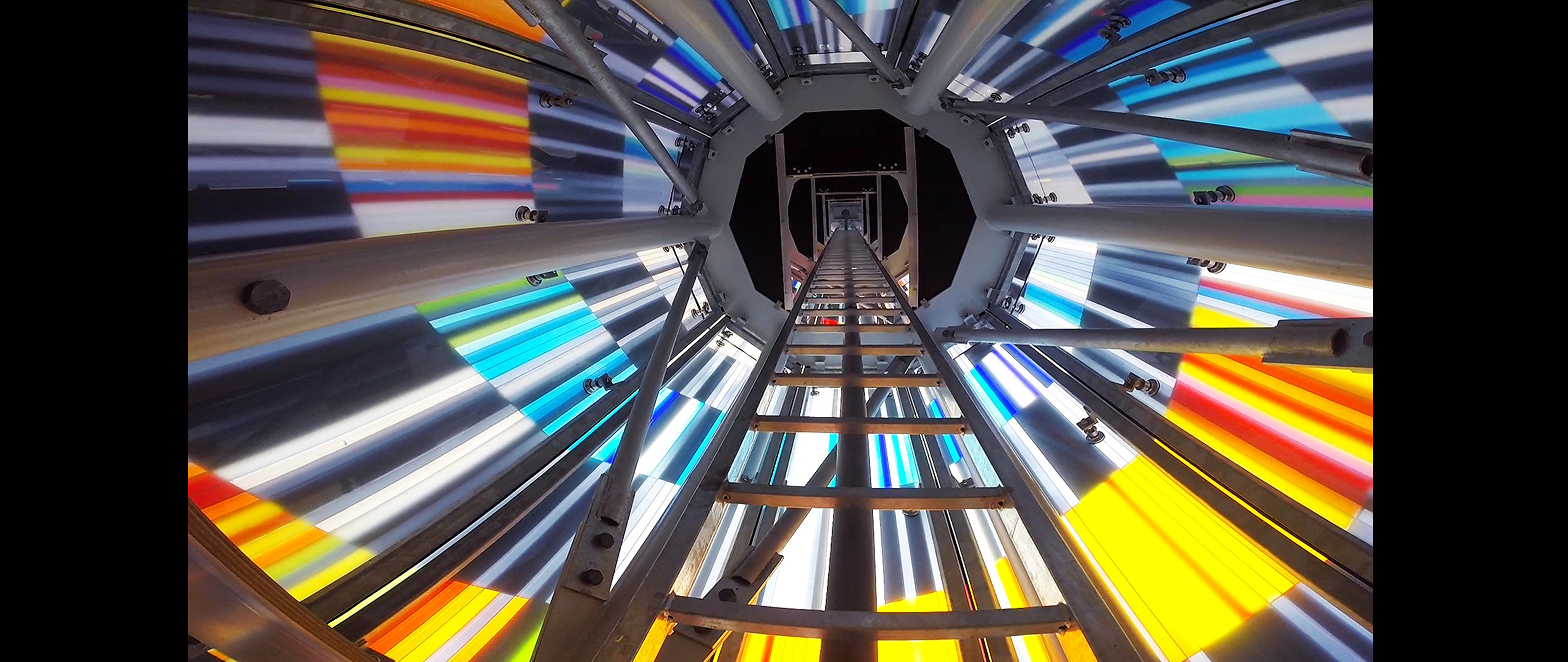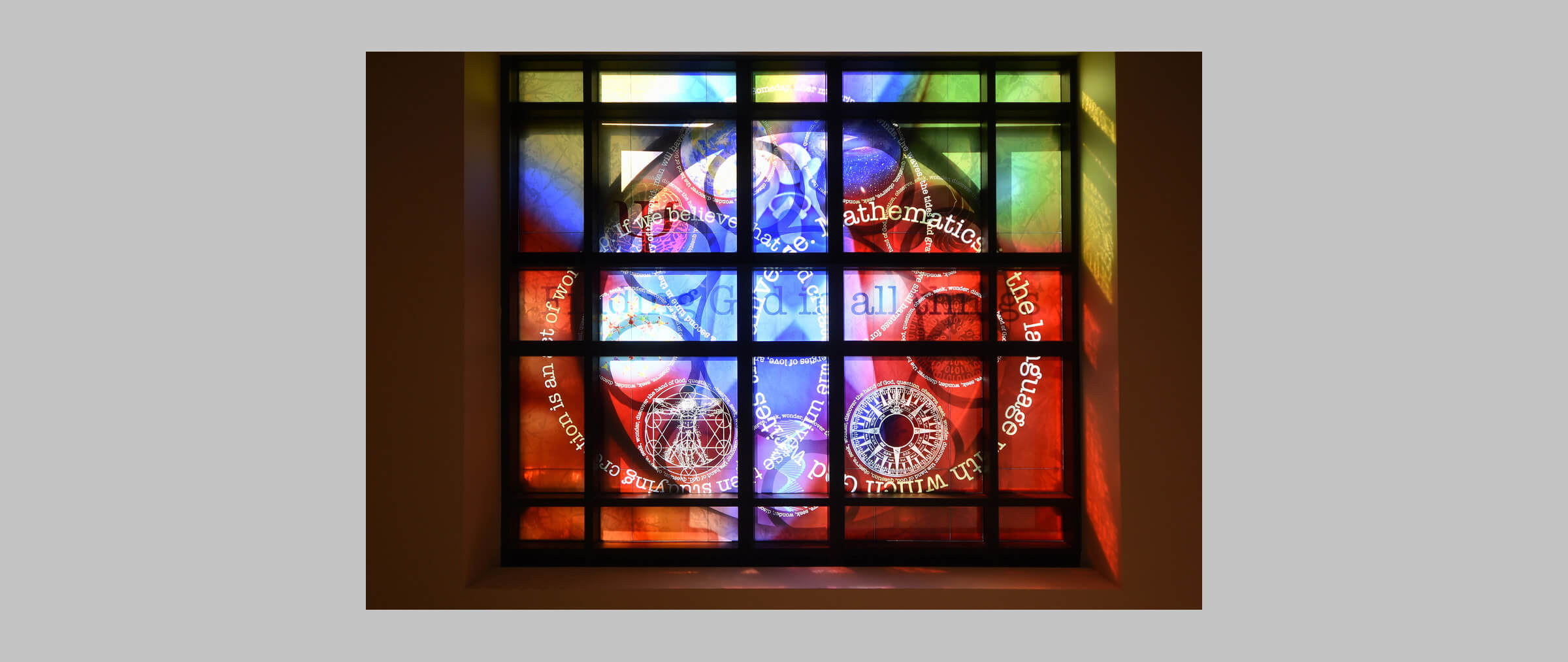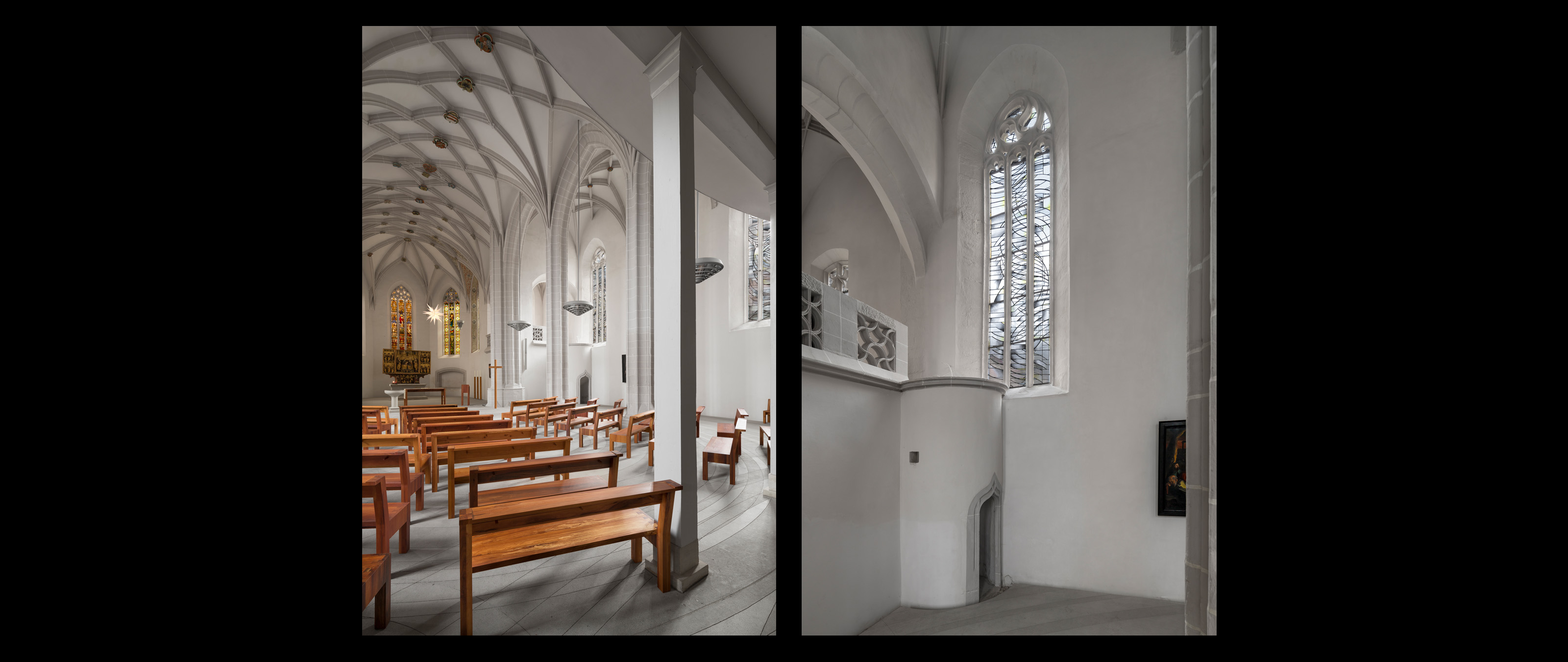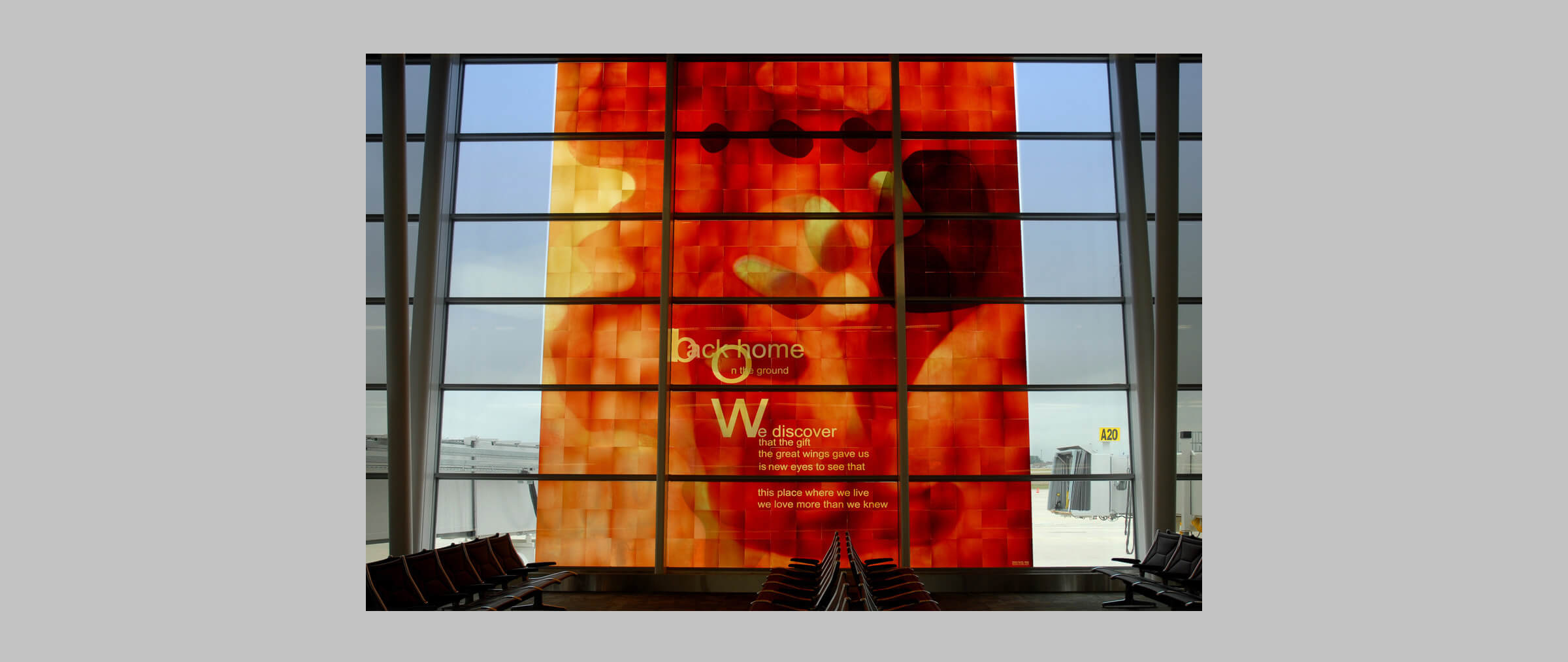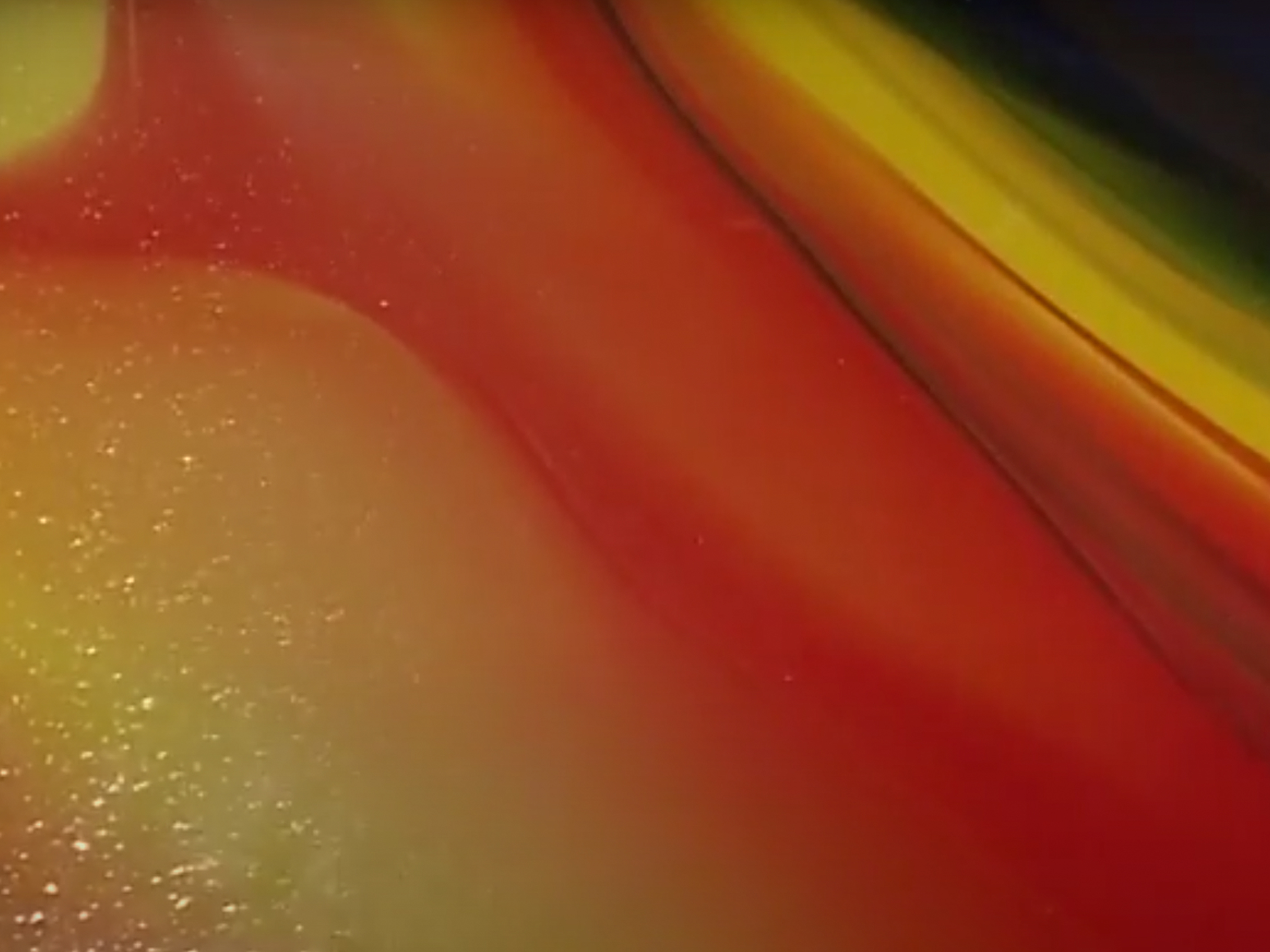
Opal and Opaque Glasses
Opal and Opaque Glasses are semi-transparent and/or non-transparent and transform the crossing light into a damped, diffuse flare. Special glass composants added to the mixture of the glass provoke the opacity.
Opal and Opaque Glasses are semi-transparent and/or non-transparent and transform the crossing light into a damped, diffuse flare. Special glass composants added to the mixture of the glass provoke the opacity.
It´s not possible to look through opaque glass. Opal glass is a clouded, translucent glass.
It appears milky white (or with color), is translucent but not fully transparent.
Production
Worked in the flashed glass technique this milky glass in the shape of a thin layer on clear or coloured basic glass is available in panel sizes of about 60x90cm (24" x 36"). Whether unicoloured, multi-coloured or marbled Opal and Opaque Glasses are suited to art works in windows and doors with inhibited view as well as backlighted wall installations.
Technique and Colours
Our mouth-blown opaque and opal glasses are produced in one color, multicolor and with a marble effect.
Here you can see some examples of different shades, structures and densities of opal and opaque glass:
Our mouth-blown opaque and opal glasses are produced in one color, multicolor and with a marble effect.
Fields of application
Opal and opaque glasses are particularly suitable for artistically designed window and door panels with restricted transparency and for backlit wall designs.
Biomedicum - | Glass-Light-Wall
For the new construction of a laboratory building for Karolinska Institutet Akademiska Hus instructed us to manufacture a customized glass. For the “Glass-Light-Wall” which should not look architectonic and beautiful only but be functional as well we produced a complex double-flashed glass with marbled shading. To complete the four facades 1.914 sheets of LambertsGlas® have been processed to a laminated glass in the size of 550x880mm each to be installed in a very clever assembly and lighting fixture.
Exklusive design with mouth-blown glass
One of the best-known buildings in the world is no doubt the Elizabeth Tower in London. Built in 1958, the 90 meter high clock tower holding “Big Ben”, is part of the Palace of Westminster. Together with Westminster Abbey and St. Margaret’s Church, it was declared a UNESCO world cultural heritage site.
In the restoration and new glazing of the four clock faces of “Big Ben”, around 1300 mouth-blown glass panels were used.
These were cut to shape after production and put together as the world-famous clock faces.




